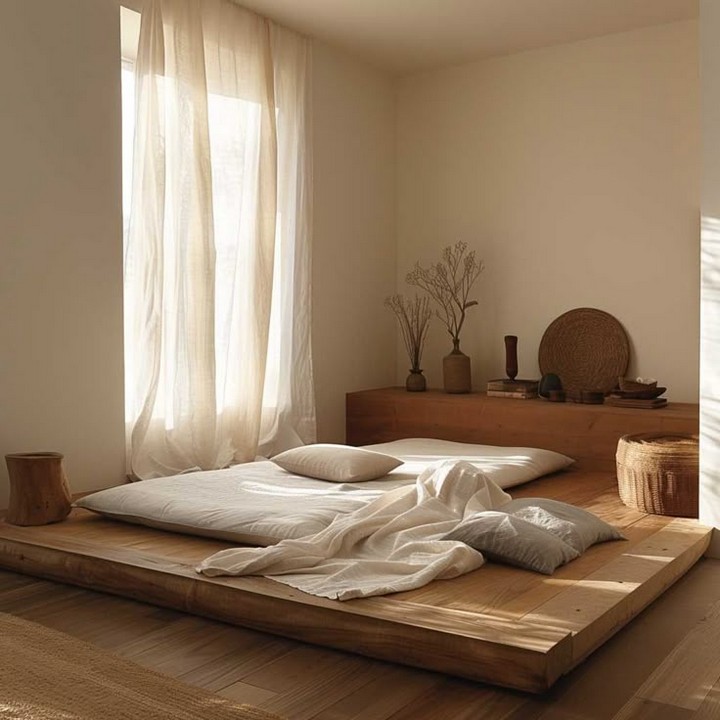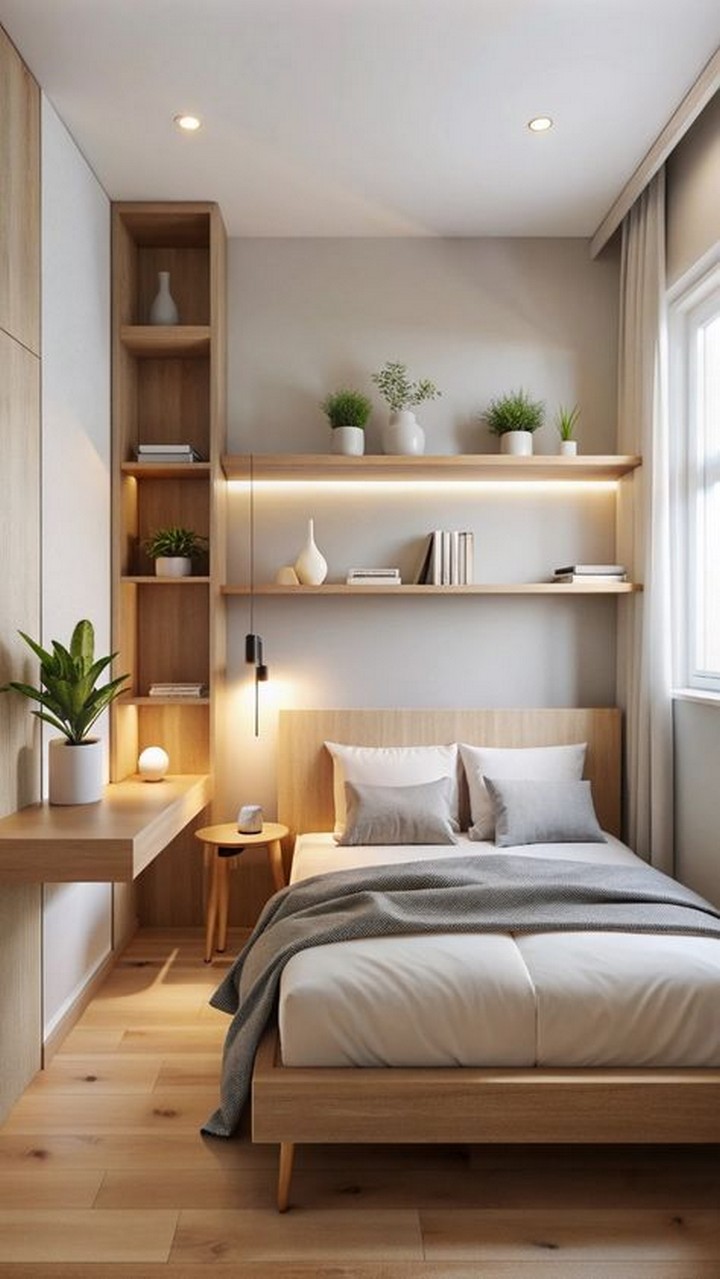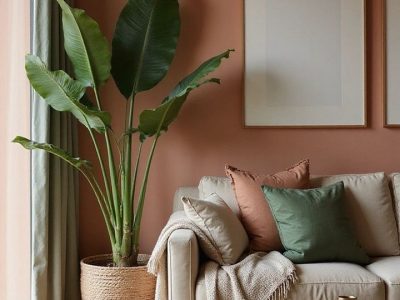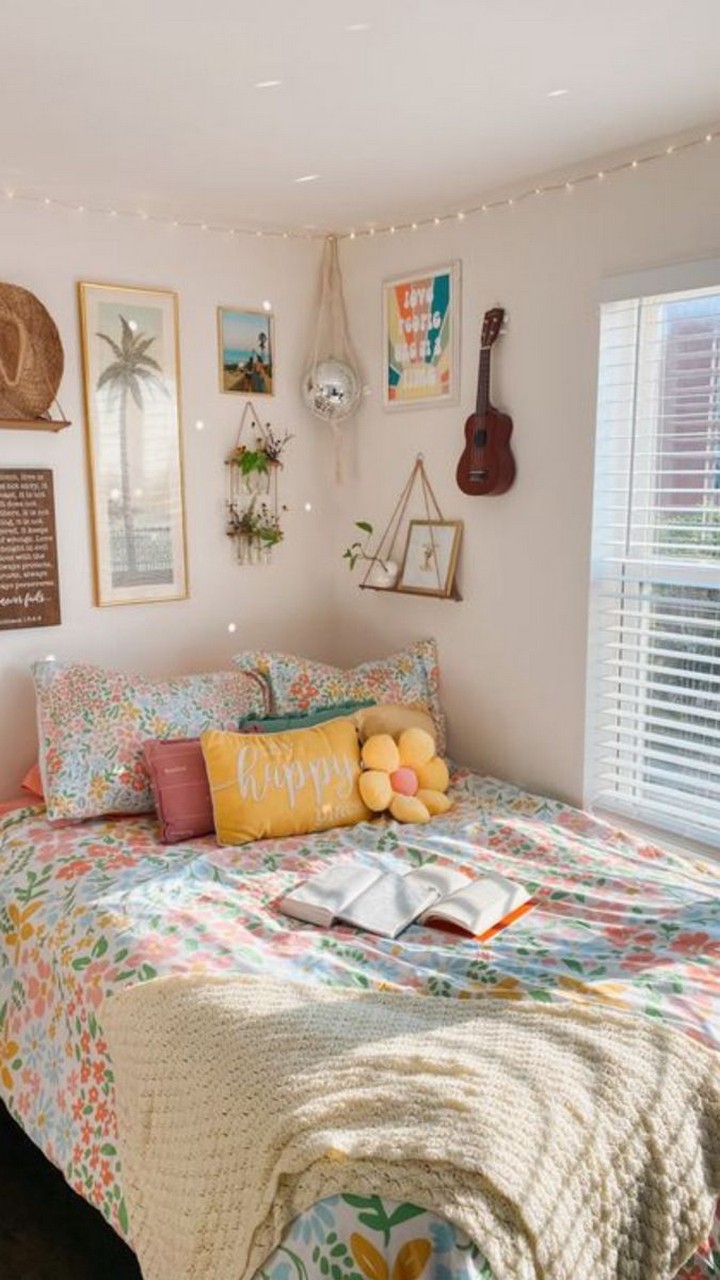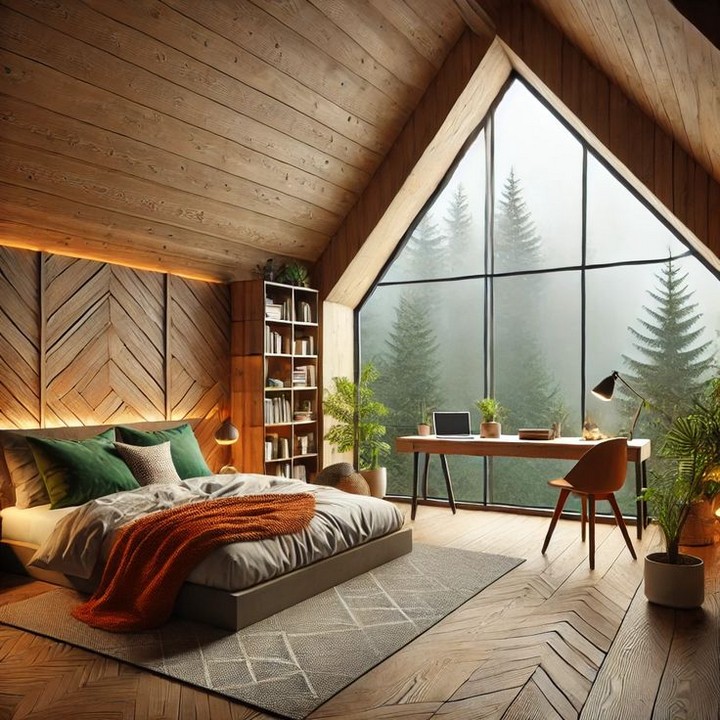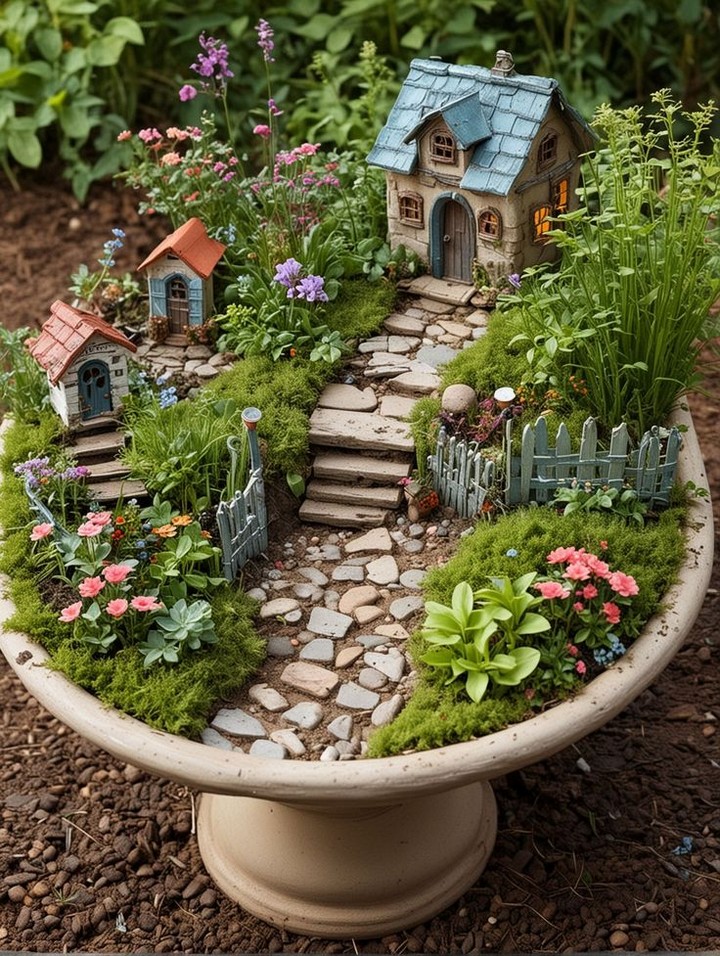In the world of interior design, Japandi style has emerged as a perfect solution for small bedrooms. This harmonious blend of Japanese minimalism and Scandinavian functionality creates spaces that feel both serene and inviting exactly what a small bedroom needs. By combining the clean lines and muted palette of Japanese aesthetics with the cozy warmth and practicality of Nordic design, Japandi offers a sophisticated approach to small space living.
Japandi design marries two seemingly different yet fundamentally similar design philosophies. Both Japanese and Scandinavian designs value simplicity, natural elements, and quality craftsmanship. The Japanese concept of “wabi-sabi” (finding beauty in imperfection) complements the Scandinavian “hygge” (creating comfort and contentment). Together, they create interiors that are minimalist yet warm, functional yet beautiful.
Let’s explore 23 inspiring Japandi small bedroom design ideas that can transform your compact space into a tranquil retreat.
1. Platform Bed with Hidden Storage
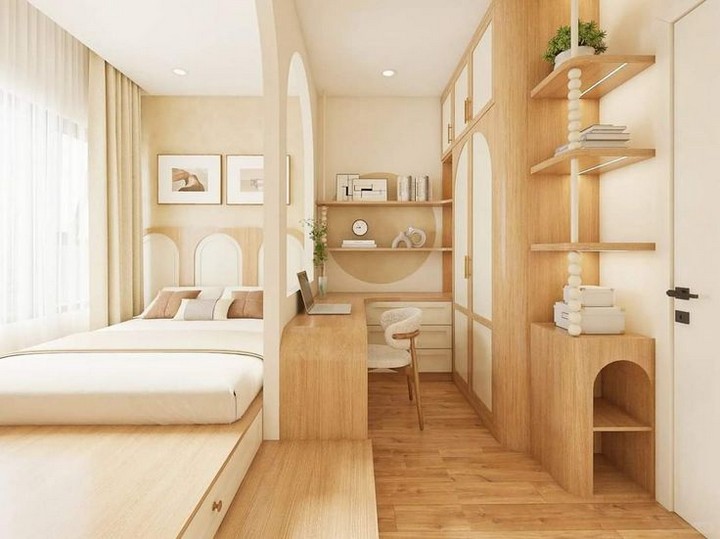
The foundation of any Japandi bedroom is a low-profile platform bed. For small spaces, choose one with built-in drawers underneath. These beds create a grounded feeling while providing valuable storage real estate. Opt for clean lines and natural wood tones like oak, walnut, or ash. The bed should sit close to the floor typically 12-18 inches high creating an illusion of more vertical space.
The minimalist design eliminates the need for a bulky bed frame and headboard, saving precious square footage. Some platform beds also feature integrated nightstands, further maximizing space efficiency without sacrificing style.
2. Wall-Mounted Bedside Tables
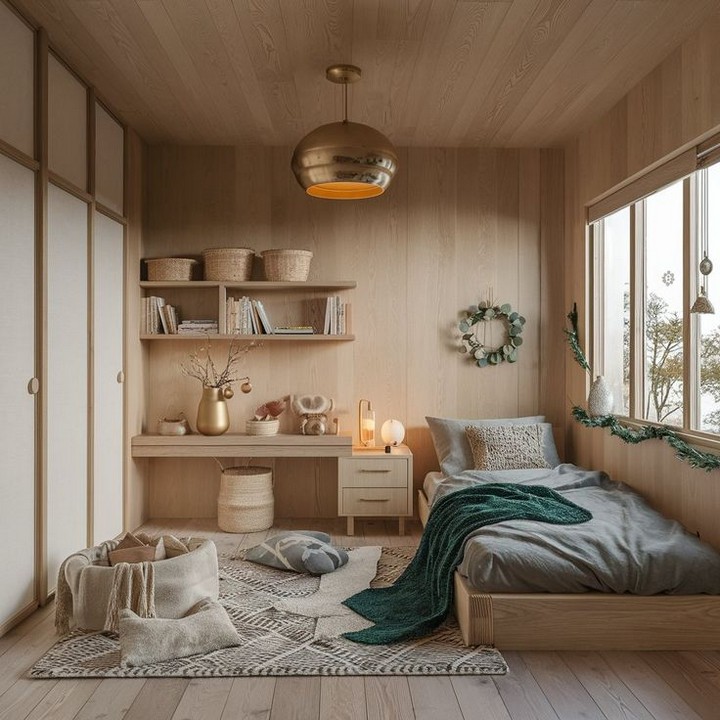
Free up floor space by installing floating nightstands. These wall-mounted surfaces provide the functionality of traditional bedside tables without the visual bulk. Choose simple wooden designs with clean lines and perhaps a single drawer for essentials.
Position these floating elements at a height that’s convenient for your platform bed. The space underneath can remain empty, enhancing the airy feel, or accommodate small baskets for additional storage. This approach embodies the Japandi principle of maximizing functionality while minimizing visual clutter.
3. Shoji-Inspired Room Dividers
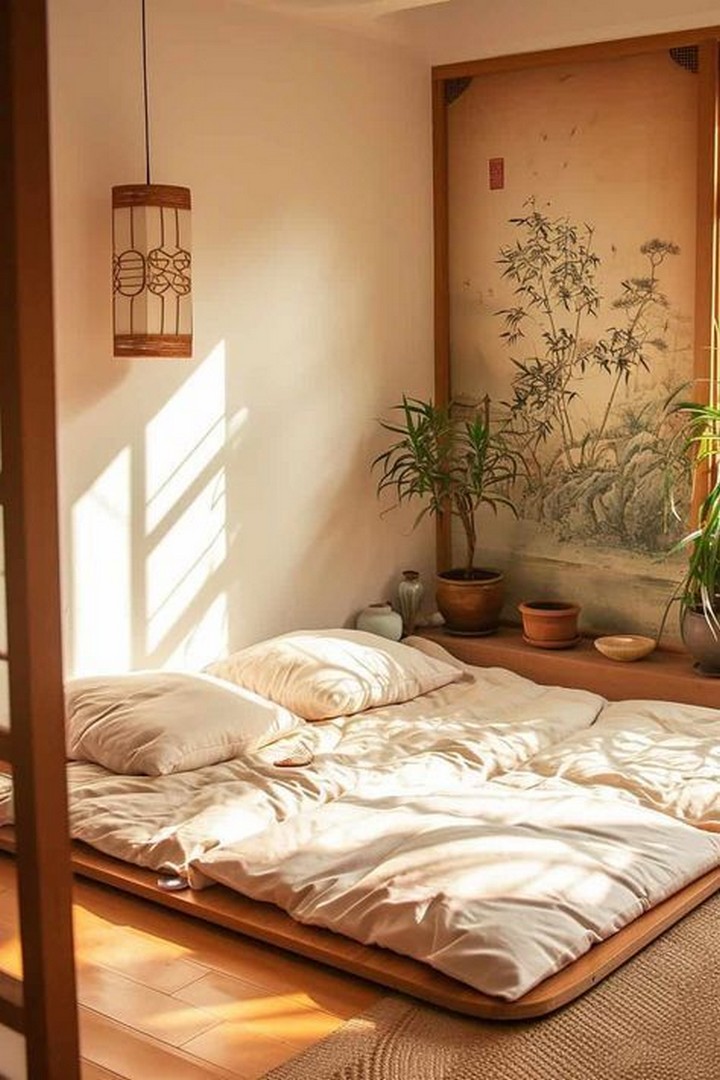
In studio apartments or shared bedrooms, privacy can be achieved with Japandi-style room dividers inspired by traditional Japanese shoji screens. These translucent partitions filter light while creating distinct zones within a space.
Modern interpretations might feature black frames with white or natural paper inserts, or wooden slats arranged in geometric patterns. When not needed, these dividers can fold compactly against a wall, making them perfect for flexible small-space living.
4. Natural Fiber Lighting
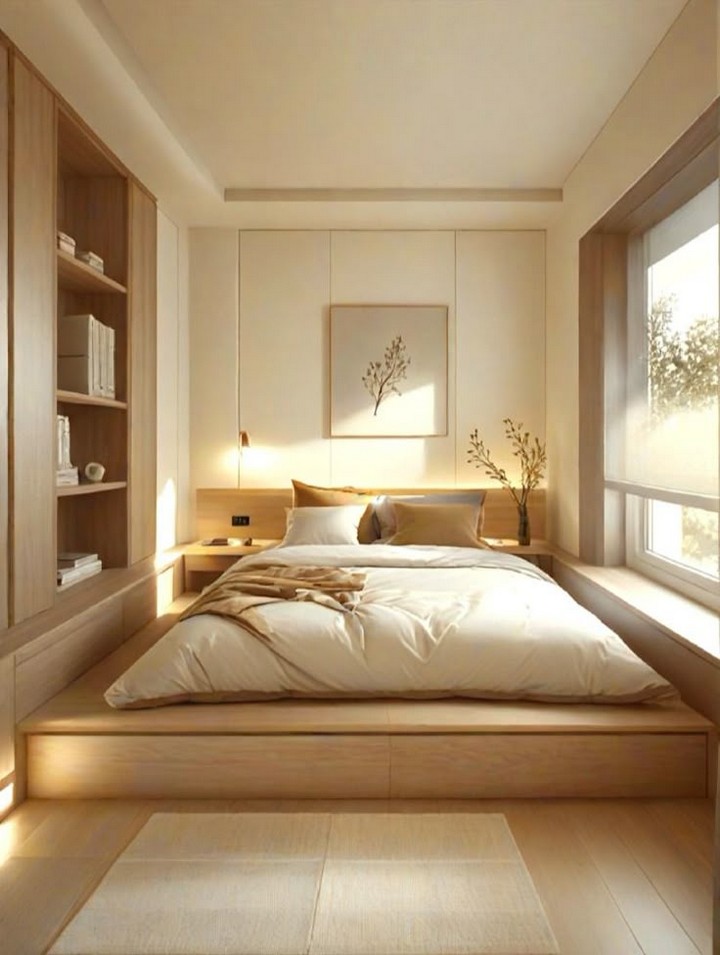
Lighting fixtures in Japandi design often incorporate natural fibers like paper, bamboo, or rattan. Pendant lights with paper shades cast a soft, diffused glow that creates atmosphere without harsh shadows. For small bedrooms, consider:
- Wall-mounted sconces that free up surface space
- Hanging pendants that draw the eye upward
- Rice paper floor lamps that provide warm ambient lighting
These fixtures should be simple in form yet sculptural enough to serve as design elements in their own right. The light quality should be warm and inviting—aiming for that cozy Scandinavian ambiance.
5. Built-In Window Seating
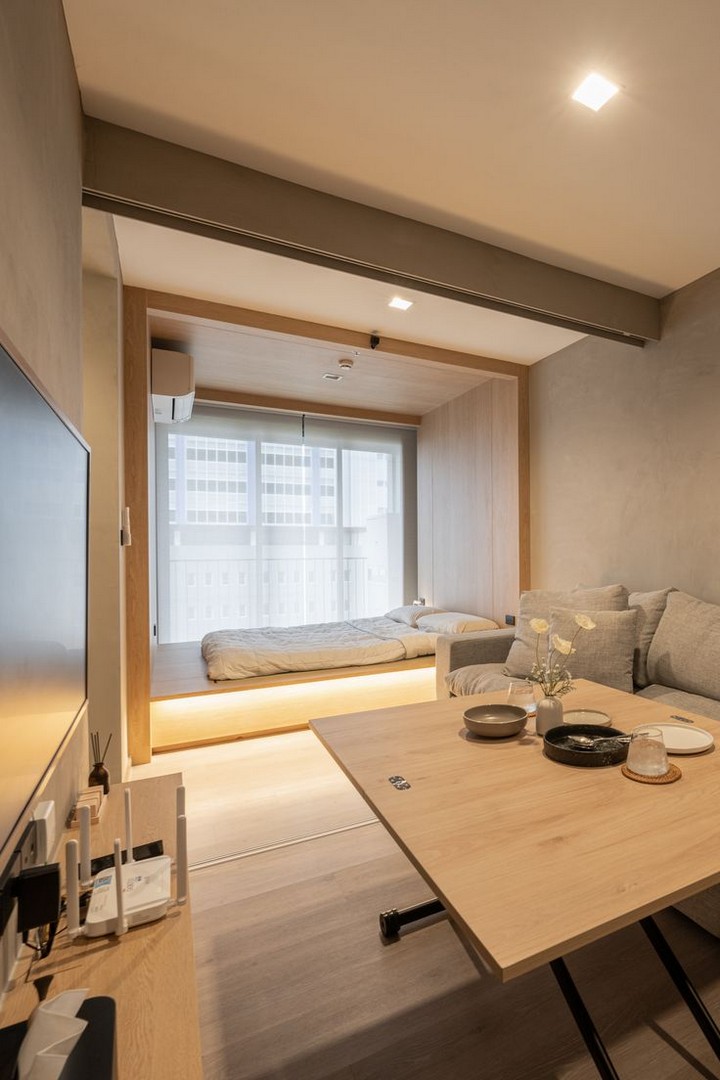
Transform the area beneath a window into a functional seating nook with storage drawers underneath. This Japandi approach utilizes otherwise wasted space while creating a perfect spot for reading or contemplation.
Top the bench with a simple cushion in natural linen or cotton, and add a few textured pillows in muted tones. The result is a multifunctional element that serves as seating, storage, and visual anchor without consuming valuable floor area.
6. Minimalist Wall Treatments
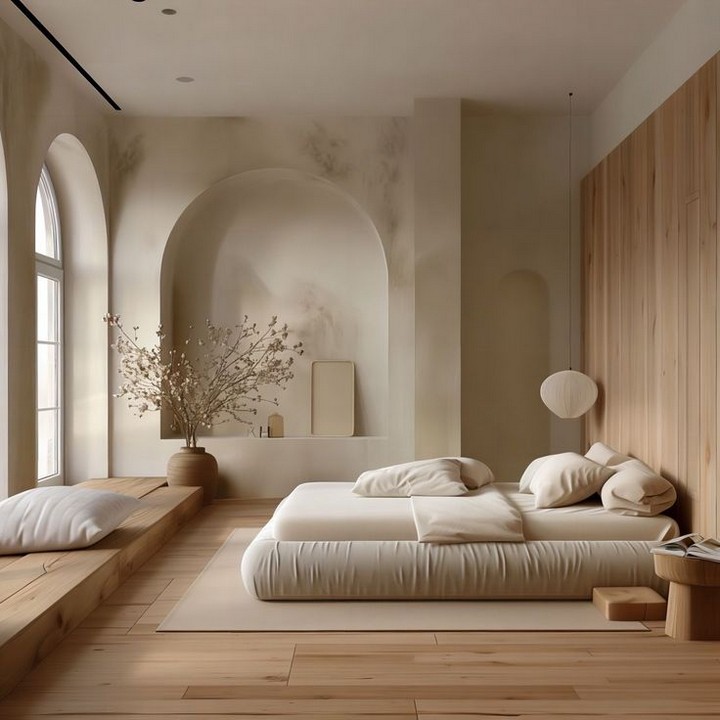
Japandi bedrooms typically feature simple wall treatments that create a serene backdrop. Consider:
- Warm white or soft gray paint
- Natural clay plaster for subtle texture
- Shiplap or tongue-and-groove paneling in light wood tones
- Accent walls featuring minimalist botanical wallpaper
The goal is to create cohesion and calmness, allowing furniture pieces and carefully chosen accessories to stand out. In small spaces, lighter walls help reflect light and create an airy feeling, though don’t be afraid of selective darker accents that can add depth.
7. Multifunctional Desk/Vanity
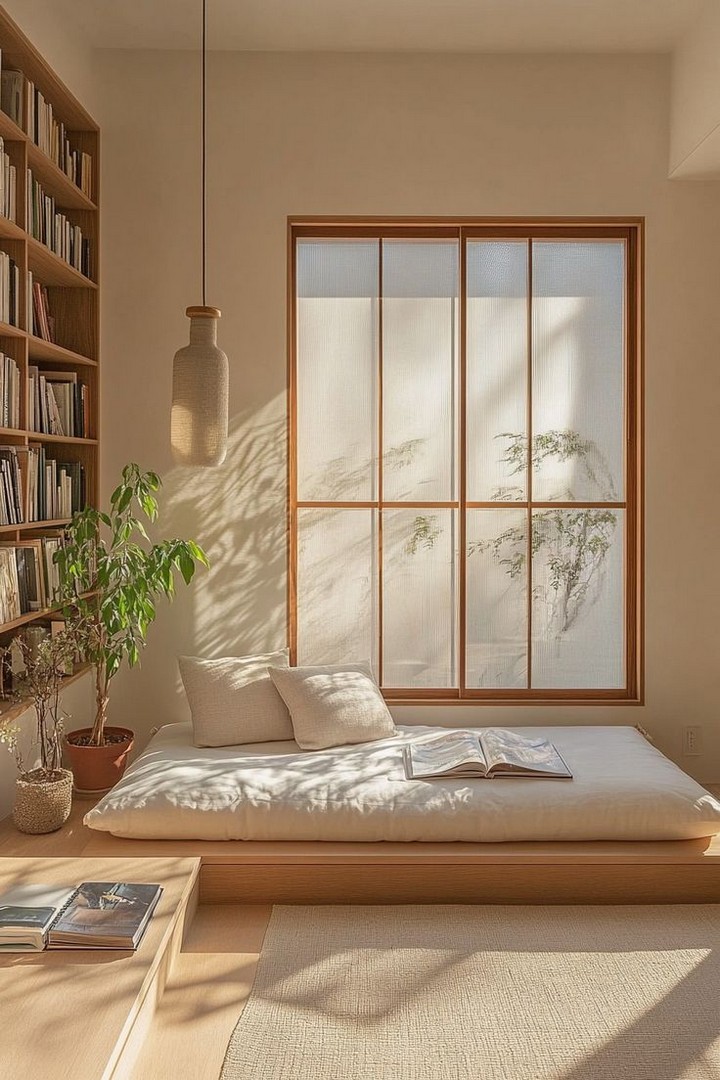
In small bedrooms that must accommodate work or grooming areas, a streamlined desk that doubles as a vanity embodies Japandi efficiency. Look for:
- Simple wooden writing desks with one or two drawers
- Wall-mounted fold-down surfaces that disappear when not in use
- Narrow console tables that can serve multiple purposes
Pair with a simple stool or chair that can tuck completely underneath when not needed. A small, frame-free mirror mounted on the wall above completes the setup without adding visual weight.
8. Neutral Textile Layering
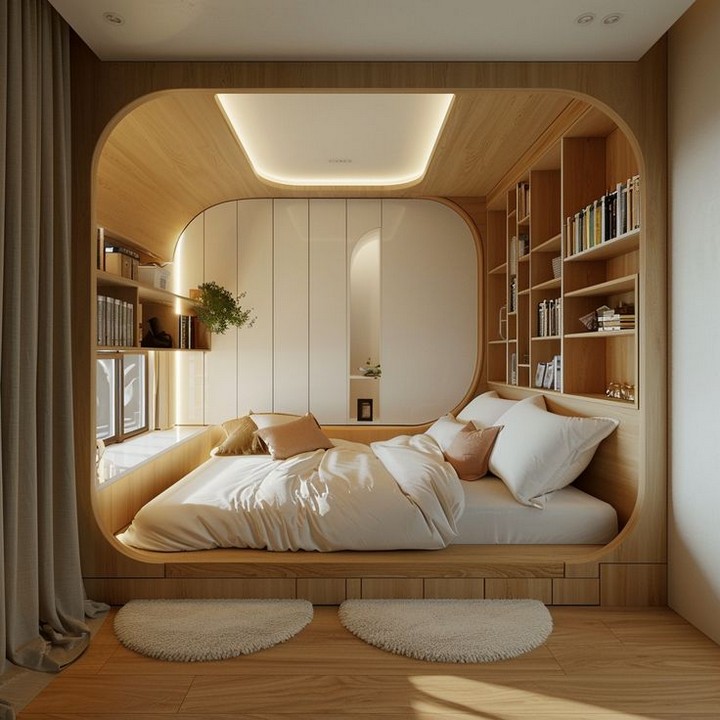
Japandi design excels at creating visual interest through thoughtful layering of textiles in a restrained color palette. For a small bedroom, this might include:
- A natural linen duvet in oatmeal or soft gray
- Cotton sheets in complementary neutral tones
- A lightweight wool throw at the foot of the bed
- Two to three pillows in varied textures but similar hues
The key is choosing quality materials that feel good to the touch while maintaining color cohesion. This approach adds warmth without the visual busyness that can make small spaces feel cluttered.
9. Streamlined Closet Solutions
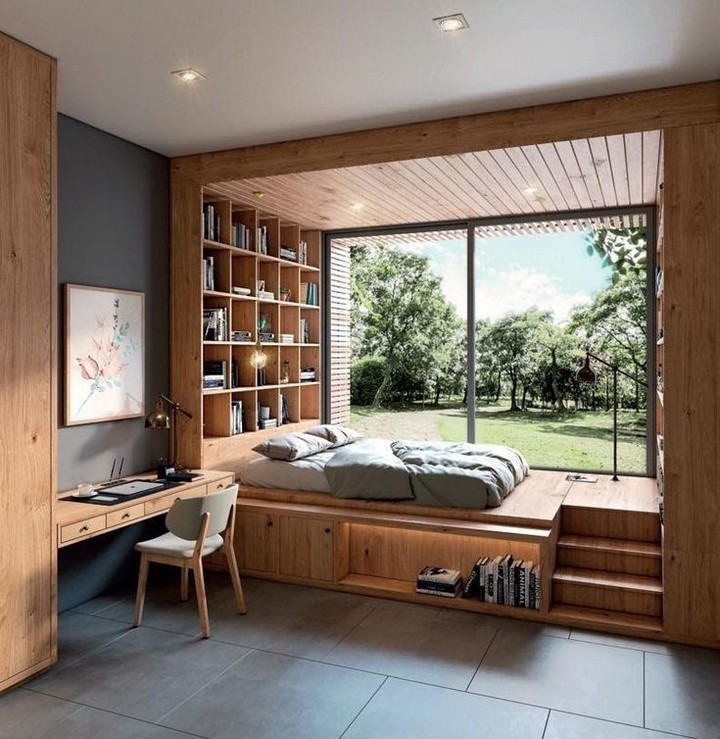
Small bedrooms require thoughtful clothing storage. Japandi closet solutions emphasize organization and concealment:
- Wardrobes with simple, handle-free doors
- Sliding closet panels that don’t require swing space
- Open shelving with fabric storage boxes for folded items
- Visible hanging rods featuring only in-season items
The goal is to create a system where everything has its place, hidden from view when possible. This supports the Japandi principle of creating calm, uncluttered environments where the mind can rest.
10. Integrated Plant Life
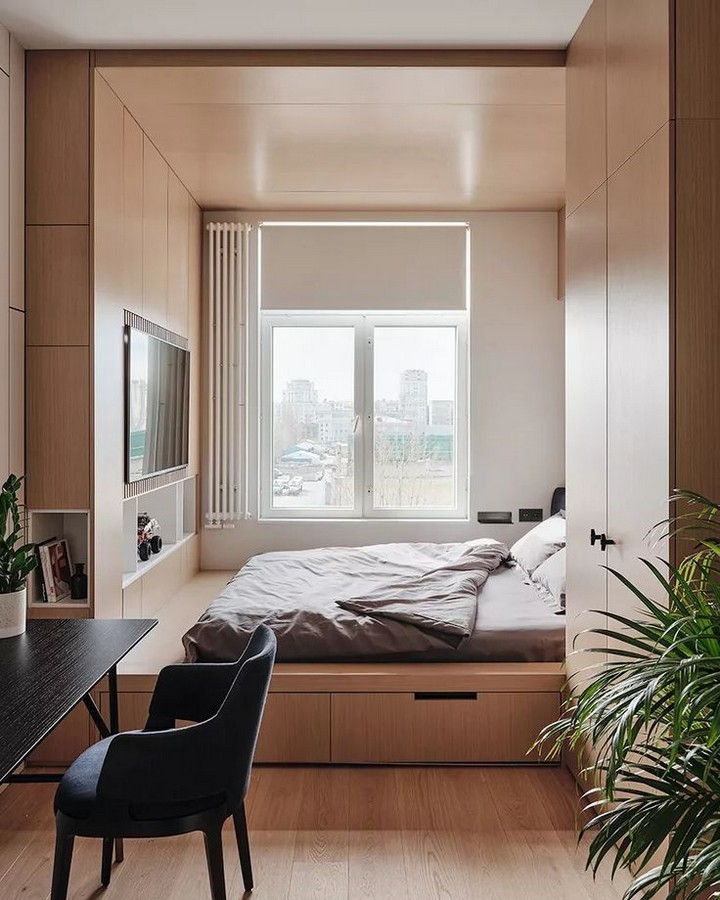
Both Japanese and Scandinavian designs emphasize connection to nature. In a small Japandi bedroom, incorporate plants strategically:
- A single statement plant like a fiddle leaf fig or rubber plant in one corner
- Small potted plants on floating shelves
- Hanging planters that don’t consume surface space
- Air plants in simple ceramic vessels
Choose architectural plant varieties with interesting forms but not overwhelming size. Planters should be simple—unglazed ceramics, concrete, or natural fiber baskets align perfectly with Japandi aesthetics.
11. Hidden Tech Solutions
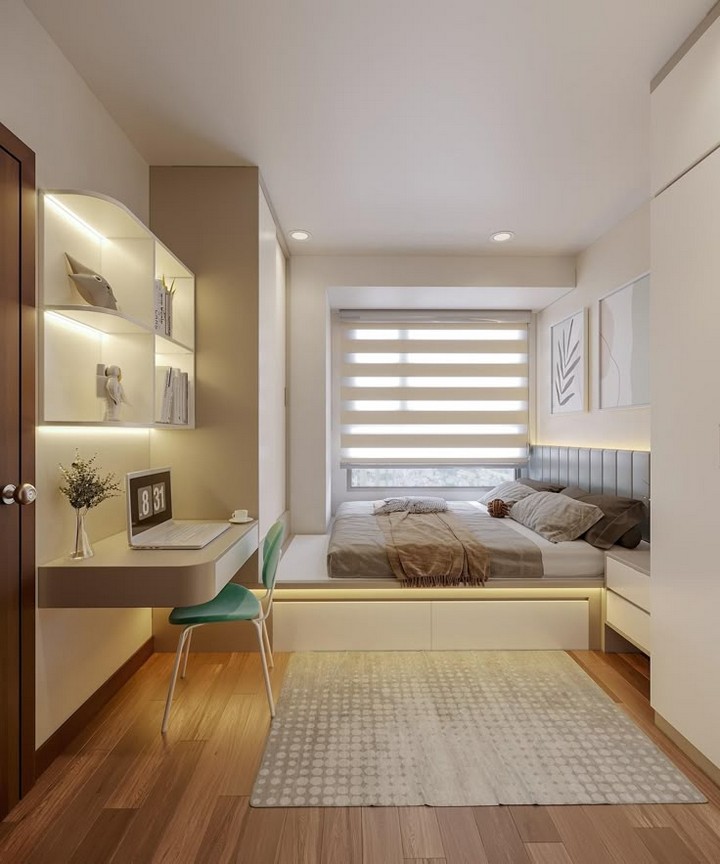
Modern bedrooms require technology, but Japandi design aims to minimize its visual presence. Consider:
- Furniture with built-in charging stations
- Cable management solutions that conceal wires
- Speakers and alarm clocks in natural materials like wood
- TV housed in a simple cabinet or mounted on an articulating arm that can be pushed flush to the wall
The goal is functionality without the visual distraction of blinking lights and tangled cords. This keeps the space feeling like a sanctuary rather than an extension of your workspace.
12. Bespoke Wall Storage
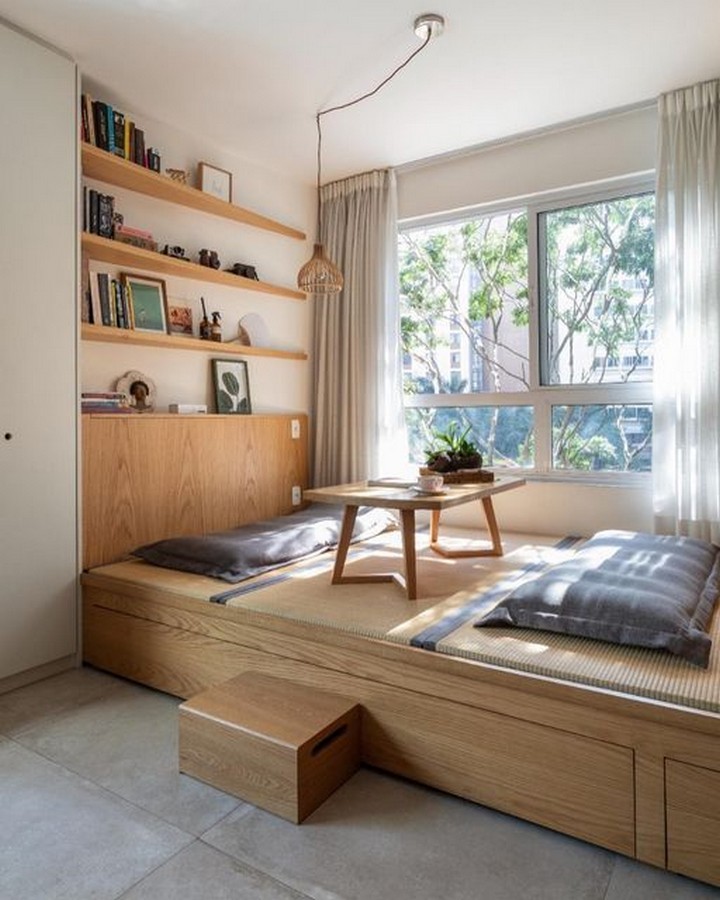
Custom or semi-custom wall storage maximizes vertical space in small Japandi bedrooms:
- Floating shelves in natural wood tones
- Modular wall systems with a mix of open and closed storage
- Simple peg rails for hanging clothing, bags, or accessories
- Narrow built-ins that utilize awkward alcoves or corners
These elements should appear architectural rather than added-on, with clean lines and minimal hardware. Limit displayed items to a carefully curated selection that brings joy embodying the Japanese concept of keeping only what sparks joy.
13. Natural Fiber Floor Coverings

Ground your Japandi bedroom with natural fiber rugs that add texture without overwhelming the space:
- Jute or sisal area rugs in natural tones
- Wool rugs with simple geometric patterns
- Tatami-inspired mats in seating areas
- Swedish rag rugs in muted colors
Choose sizes appropriate to the scale of the room—in very small spaces, consider a runner alongside the bed rather than a full-size area rug. Natural fibers add warmth and acoustic comfort while maintaining the organic connection that defines Japandi style.
14. Functional Art as Decor
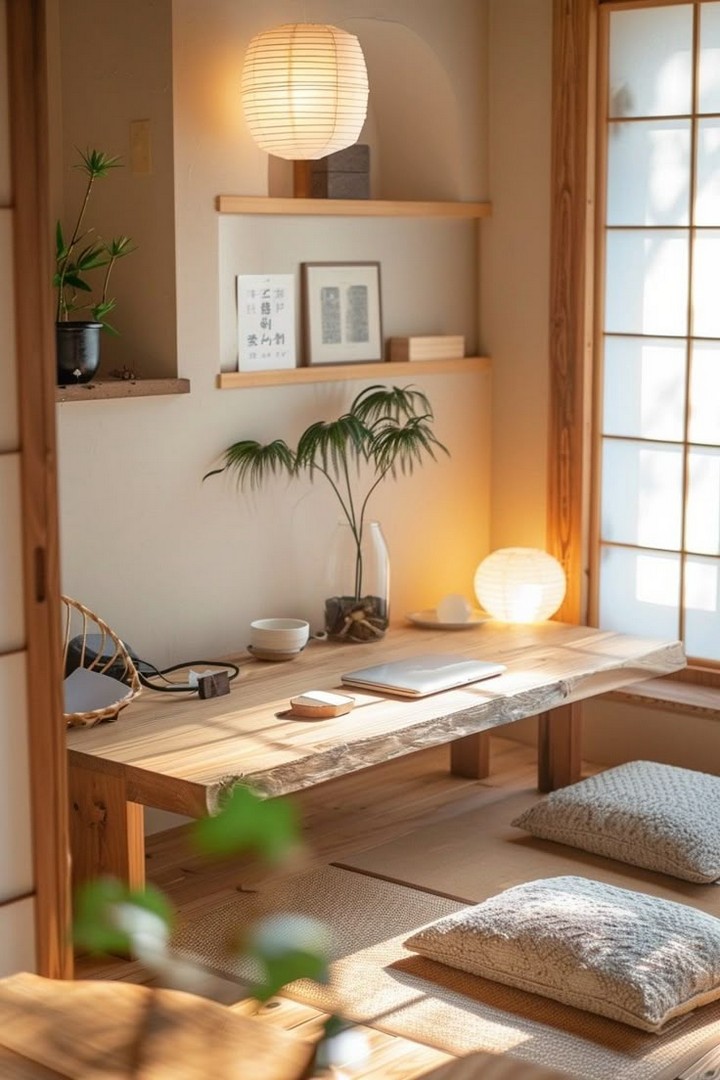
Japandi styling favors useful objects that are also beautiful, rather than purely decorative items:
- Handcrafted ceramic water carafes beside the bed
- Japanese paper boxes for storing small items
- Wooden trays for corralling essentials
- Textile wall hangings that improve room acoustics
Each piece should earn its place through both beauty and purpose. This approach reduces clutter while ensuring every element in the room contributes to the overall aesthetic and functionality.
15. Sliding Doors and Room Dividers

Traditional Japanese architecture often utilizes sliding doors and movable partitions to transform spaces as needed. In small Japandi bedrooms, consider:
- Sliding barn-style doors that don’t require swing space
- Pocket doors that disappear into walls
- Hanging fabric panels that can divide spaces temporarily
- Folding screens that provide privacy when needed
These flexible elements allow one space to serve multiple functions throughout the day—a key consideration when square footage is limited.
16. Asymmetrical Balance

Japandi design often employs asymmetrical arrangements that feel intentional rather than haphazard. In a small bedroom, this might look like:
- A platform bed positioned off-center to create space for a desk area
- One substantial bedside table paired with a minimal floating shelf on the other side
- A statement plant or floor lamp balancing the visual weight of furniture
This approach creates dynamic spaces that feel curated rather than formulaic, adding interest without requiring additional square footage.
17. Tone-on-Tone Color Strategy
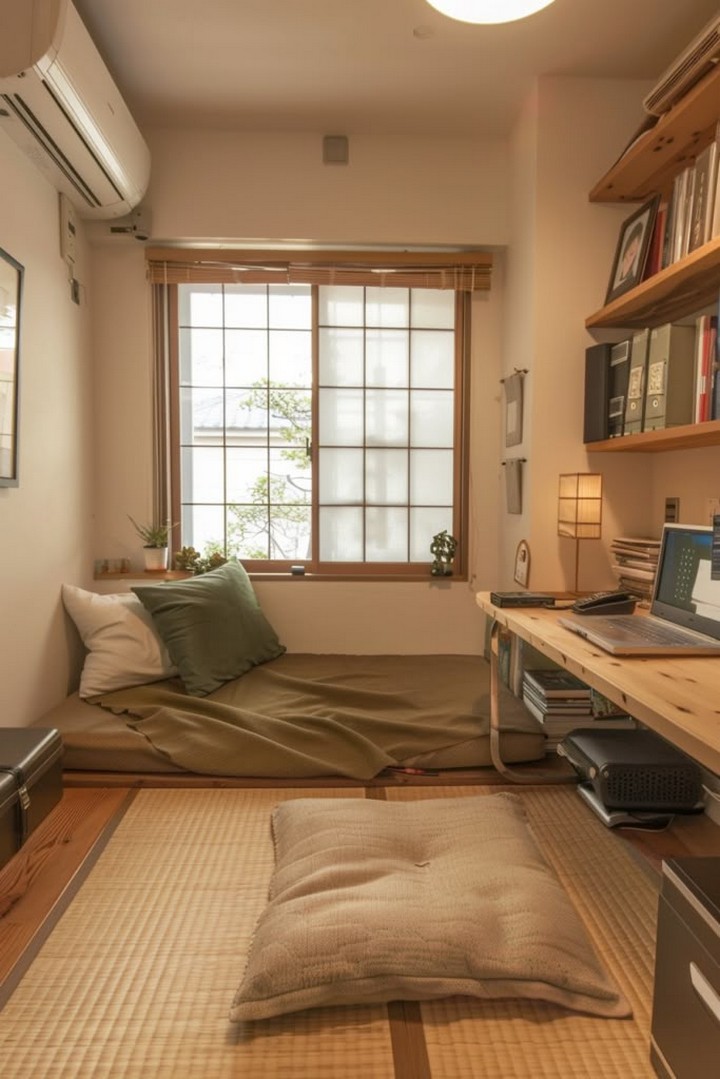
While strictly minimalist designs might stick to white and natural wood, Japandi style embraces subtle color variation within a controlled palette:
- Walls, trim, and ceiling in slightly different shades of the same color
- Bedding that incorporates subtle pattern within the same color family
- Accessories in deeper or lighter versions of the main room colors
This tone-on-tone approach creates visual depth without the jarring transitions that can make small spaces feel choppy. Consider warm neutrals like oatmeal, taupe, and sand, or cool neutrals like slate, dove, and fog.
18. Integrated Headboard Storage

Maximize the wall space behind your bed with integrated headboard storage:
- Floating shelves that create a backdrop for your bed
- Shallow cabinets with push-to-open doors
- Niches cut into the wall for books and small objects
- Wall-mounted reading lights that don’t require bedside tables
This approach consolidates storage and creates a focal point without consuming valuable floor space. Choose simple designs with clean lines and minimal hardware for an authentic Japandi look.
19. Natural Material Contrast
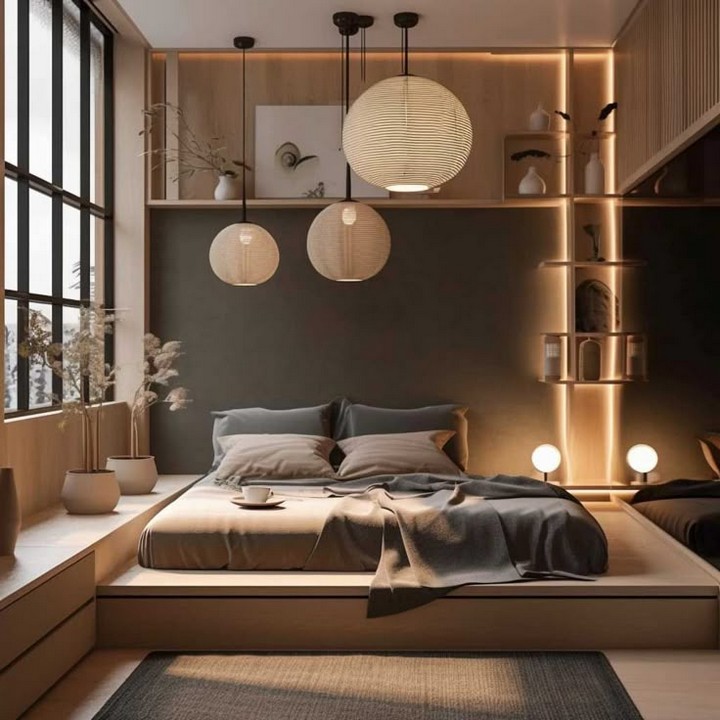
Japandi design excels at mixing complementary natural materials to create subtle contrast:
- Light wood paired with black metal fixtures
- Smooth ceramics alongside rough stone accessories
- Soft linens contrasting with leather or canvas accents
- Matte finishes playing against selective glossy elements
These material juxtapositions create visual interest without requiring bold patterns or colors that might overwhelm a small space. Focus on tactile contrast that invites touch and engagement.
20. Elevated Essential Storage
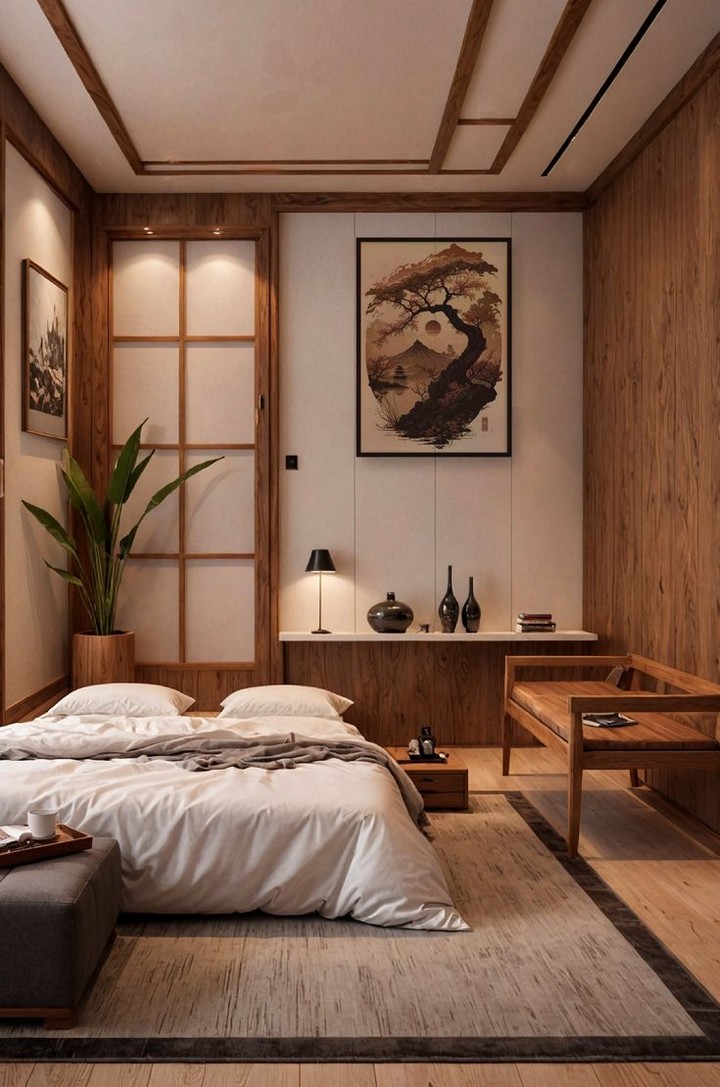
In small Japandi bedrooms, everyday items become design elements through thoughtful display:
- Open shelving with carefully arranged books and objects
- Beautiful hooks or hangers for displaying tomorrow’s outfit
- Decorative boxes and baskets that conceal necessary clutter
- Wall-mounted organizers for jewelry or accessories
The key is selectivity display only items that are both functional and beautiful, arranging them with intention rather than accumulation.
21. Focused Accent Lighting
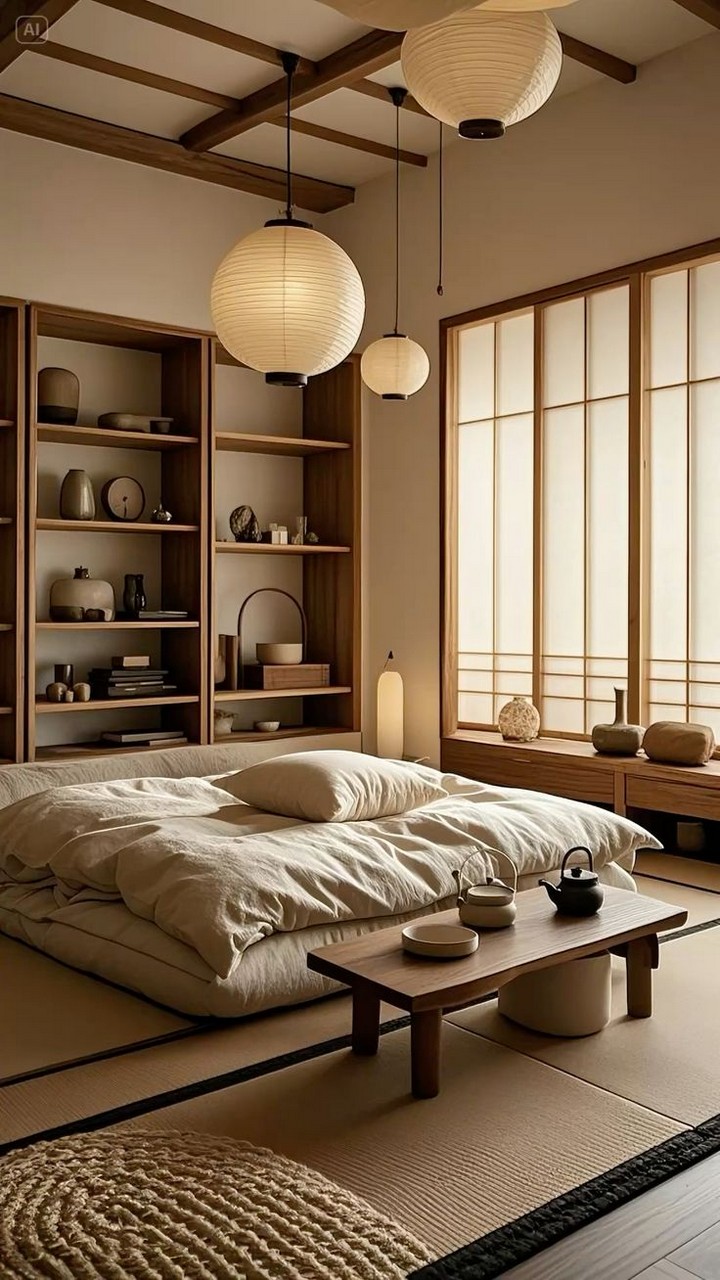
Japandi design uses light as a material element, creating atmosphere through carefully positioned fixtures:
- Reading lights integrated into the headboard
- Picture lights highlighting a single piece of art
- Under-shelf LED strips that create a floating effect
- Table lamps with sculptural bases and simple shades
For small bedrooms, directional lighting helps define specific zones and creates depth. Choose fixtures with clean lines in natural materials like wood, ceramic, paper, or metal with matte finishes.
22. Simplified Textural Contrast
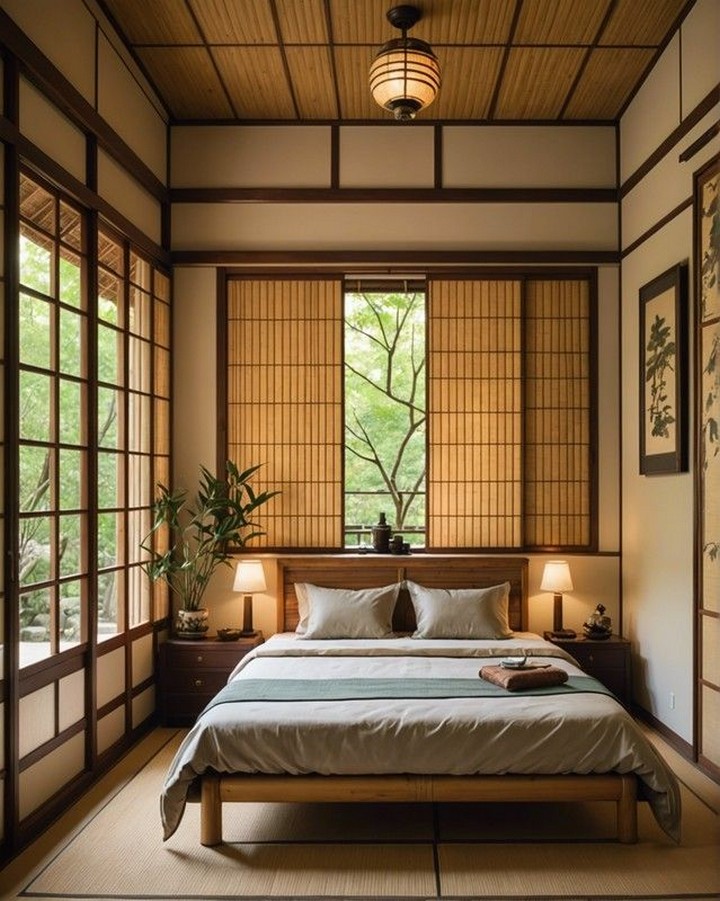
While maintaining a restricted color palette, Japandi bedrooms incorporate varied textures for visual interest:
- Nubby linen duvet covers against smooth cotton sheets
- Rough ceramic vessels alongside polished wooden surfaces
- Handwoven baskets contrasting with sleek metal elements
- Soft wool throws draped over structured furniture
These textural juxtapositions add sensory richness without requiring additional space or decorative objects. They’re particularly important in small rooms where the limited square footage means each element must work harder to create ambiance.
23. Considered Negative Space
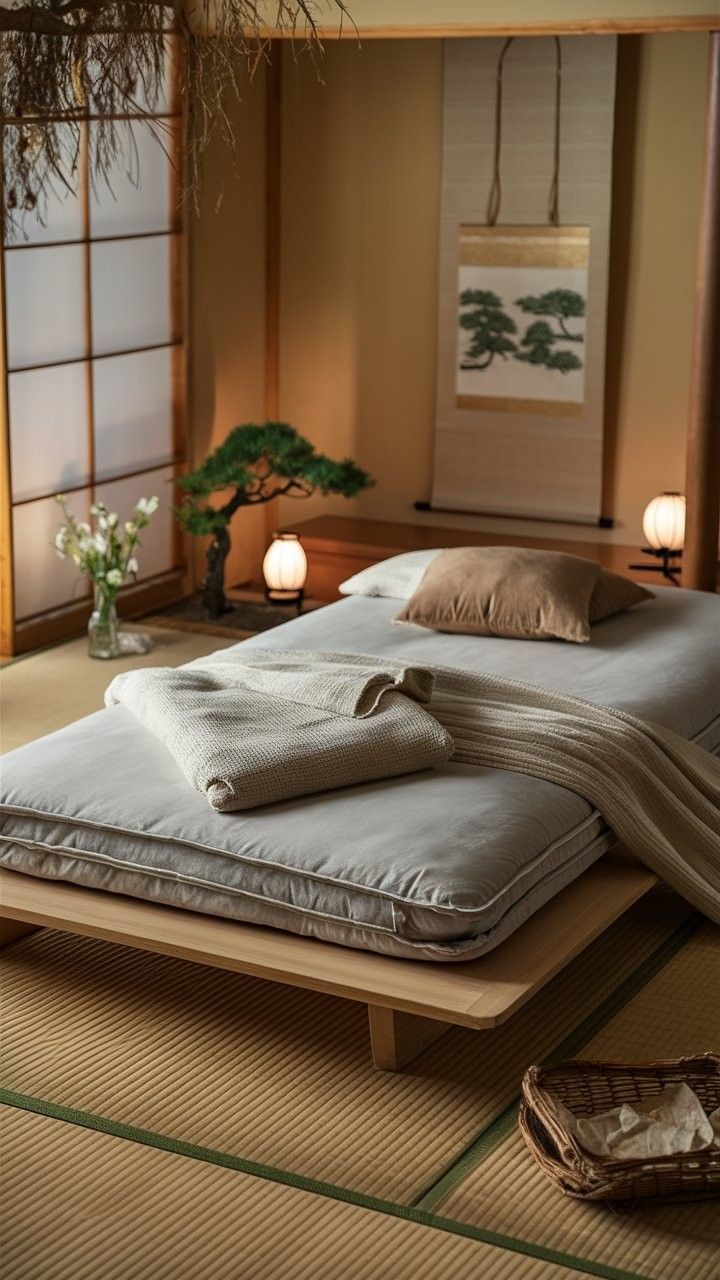
Perhaps most importantly, Japandi design values negative space the empty areas that allow the eye and mind to rest:
- Walls left intentionally bare except for one or two meaningful pieces
- Nightstands with clear surfaces except for essential items
- Windowsills kept free of clutter to frame outdoor views
- Space between furniture pieces to allow easy movement
In small bedrooms, resist the urge to fill every corner. The Japanese concept of “ma” (the meaningful space between things) reminds us that emptiness itself is an essential design element particularly when square footage is limited.
Finding Harmony in Constraint
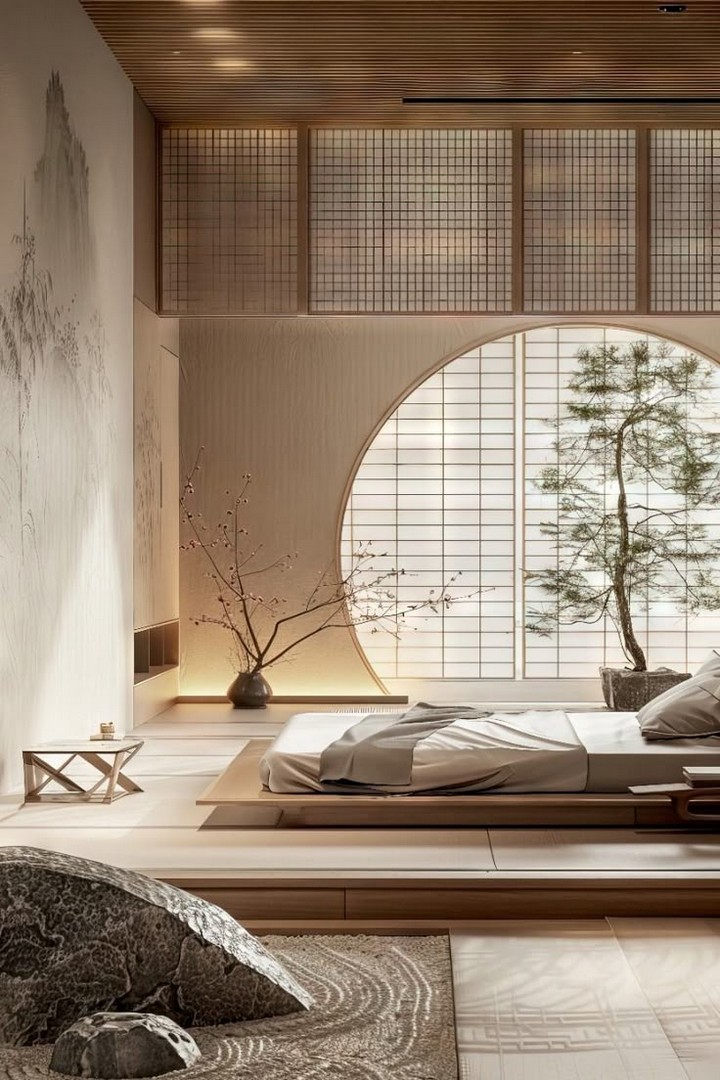
The beauty of Japandi style for small bedrooms lies in its embrace of constraint as a creative catalyst. By thoughtfully combining Japanese minimalism with Scandinavian coziness, this approach transforms spatial limitations into opportunities for more mindful living.
A well-designed Japandi bedroom doesn’t fight against its modest dimensions but works within them to create a sanctuary that supports rest, reflection, and rejuvenation. In our increasingly hectic world, perhaps that’s exactly what we need most from our personal spaces not grandeur or ostentation, but simplicity, functionality, and a deep connection to the natural world.
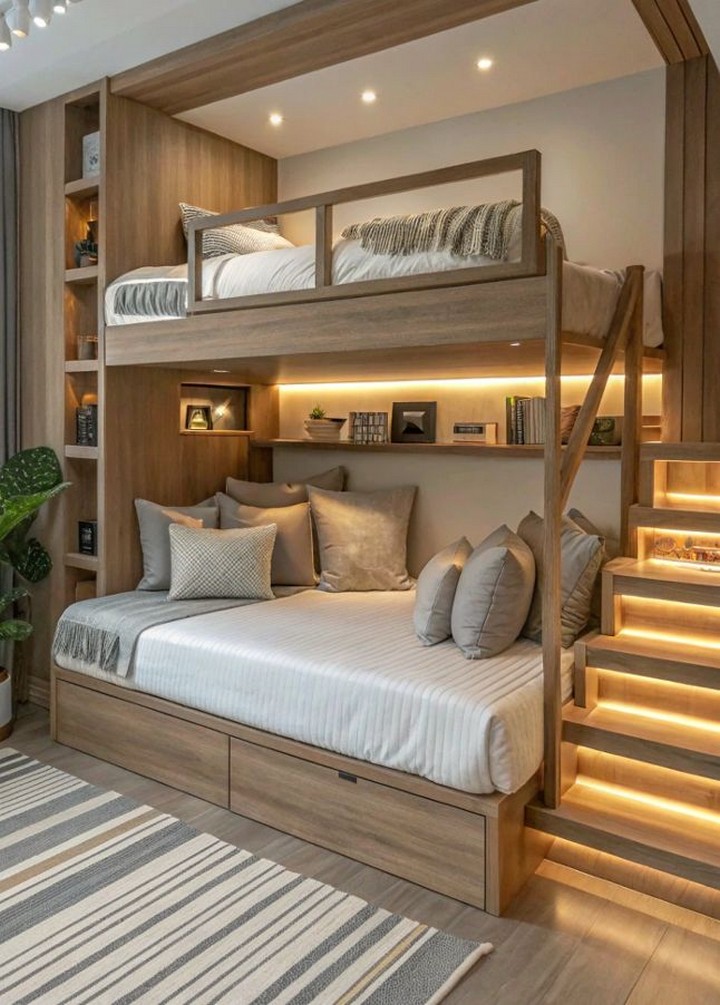
What aspects of Japandi design resonate most with your small bedroom needs? Have you implemented any of these ideas in your own space? Share your experiences in the comments below, or reach out to us for personalized advice on bringing Japandi harmony to your bedroom. For more small-space design inspiration, explore our related articles on minimalist storage solutions and natural material palettes for compact living.
Ready to transform your compact bedroom? Start planning your Japandi oasis today! 🏡✨

